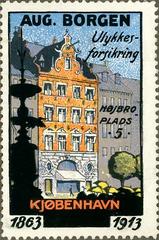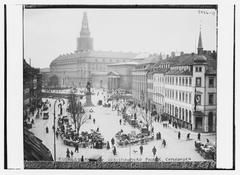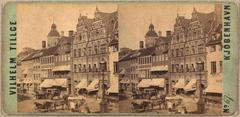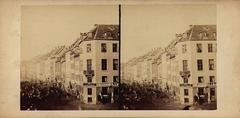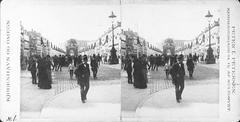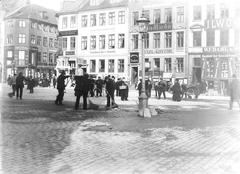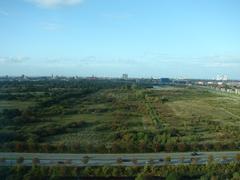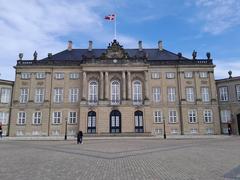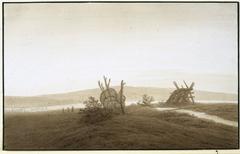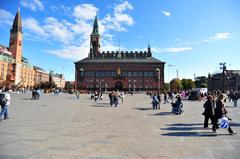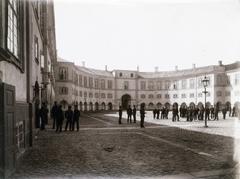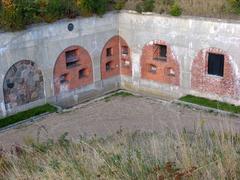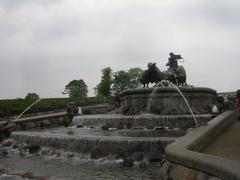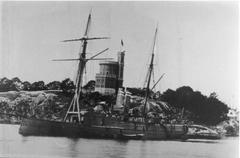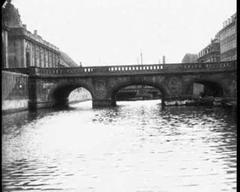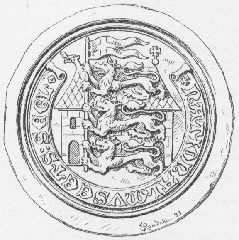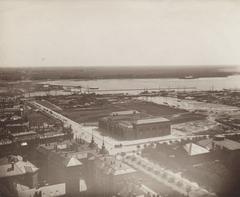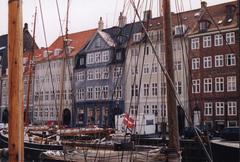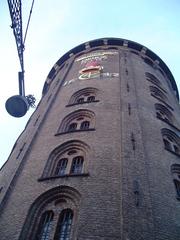
Visiting Højbro Plads: History, Significance, and Travel Guide
Date: 01/08/2024
Introduction
Højbro Plads, an iconic public square in the heart of Copenhagen, Denmark, serves as a vibrant testament to the city’s rich history and architectural splendor. Originating in the aftermath of the Great Fire of 1795, Højbro Plads transformed from a densely packed area into a meticulously designed urban space that not only acts as a firebreak but also enhances the aesthetic appeal of Copenhagen’s city center. The square and its surrounding buildings are prime examples of Neoclassical architecture, a style that flourished during the city’s reconstruction phase. Today, Højbro Plads is more than just a historical landmark; it is a cultural hub hosting various events, markets, and festivals, including the popular Christmas Market and the Copenhagen Jazz Festival. Its strategic location on the Strøget pedestrian street offers picturesque views of notable landmarks such as Christiansborg Palace and the Old Stock Exchange, making it a must-visit destination for both tourists and locals (Wikipedia, Guide Story, Lonely Planet).
Table of Contents
- Introduction
- Historical Background
- Architectural Evolution
- The Role of Højbro Bridge
- The Equestrian Statue of Absalon
- Market Activities and Cultural Significance
- Modern Developments and Criticisms
- Influence of the Royal Academy of Fine Arts
- Visitor Information
- Conclusion
Historical Background
The Great Fire of 1795 and the Creation of Højbro Plads
Højbro Plads owes its existence to the catastrophic Great Fire of 1795. Before the fire, the area was a dense block bounded by Højbrostræde to the west and Store Færgestræde to the east. The fire ravaged the area between present-day Strøget and the canal, necessitating a comprehensive rebuilding plan (Wikipedia).
City architect Jørgen Henrich Rawert was tasked with creating a master plan for the reconstruction. His design included the layout of Højbro Plads, which served a dual purpose: acting as a firebreak to prevent future conflagrations and enhancing the aesthetic appeal of the area (Guide Story).
Architectural Evolution
The buildings surrounding Højbro Plads predominantly feature Neoclassical architecture, a style prevalent during the rebuilding boom following the fire. This style is characterized by accented windows with triangular frontons, recessed joints, and decorative friezes above the second floor (Wikipedia).
One notable building at the corner of Gammel Strand (No. 10) was originally the headquarters of the insurance company Kgl. Brand. Designed by Fritz Koch and completed by Gotfred Tvede in 1906, it now houses the law firm Johan Schlüter (Wikipedia).
The Role of Højbro Bridge
Højbro Plads derives its name from the Højbro Bridge, which connects the square to Slotsholmen, the historical heart of Copenhagen. The bridge has undergone several transformations over the centuries. Initially, it may have been called Blithebro, possibly due to its height allowing ships to pass underneath (Hovedstadshistorie).
In the early Middle Ages, Højbro served as a ferry connection to Amager. By the late 1700s, the area where Højbro Plads now stands was known as Færgestræde, leading down to the ferry. The bridge itself consisted of two parts: an outer bridge accessible to everyone and an inner bridge reserved for those with business at the castle (Hovedstadshistorie).
The Equestrian Statue of Absalon
One striking feature of Højbro Plads is the equestrian statue of Absalon, the warrior-bishop traditionally credited with founding Copenhagen in 1167. The statue, designed by Vilhelm Bissen, depicts Absalon as a military commander mounted on a rearing horse. It was inaugurated in 1901 to commemorate the septcentennial of Absalon’s death (Wikipedia).
Market Activities and Cultural Significance
Throughout the 19th century, Højbro Plads became an extension of the vegetable and flower market on Amagertorv. The butchers were relocated to the nearby Nikolaj Plads, contributing to the square’s vibrant atmosphere (Wikipedia).
Today, Højbro Plads continues to be a focal point for various events, including the Christmas Market and the Copenhagen Jazz Festival. The square’s strategic location connects the Strøget pedestrian shopping street to Slotsholmen, offering picturesque views of the canal, Christiansborg Palace, and the Old Stock Exchange (Lonely Planet).
Modern Developments and Criticisms
In 1995, Højbro Plads underwent refurbishment, and in 1998, 22 lime trees were planted on the square as a result of a private donation. However, the placement of these trees has been criticized by former city architect Otto Käszner for disrupting the square’s aesthetic balance (Wikipedia).
Influence of the Royal Academy of Fine Arts
The rebuilding efforts following the Great Fire of 1795 were significantly influenced by initiatives from the Royal Academy of Fine Arts. Johann Friedrich Struensee launched a program encouraging master craftsmen to take supplementary drawing classes to promote “good taste” in architecture. This initiative aimed to bridge the gap between prestigious public buildings and vernacular residential structures (Wikipedia).
Visitor Information
Højbro Plads Opening Hours
Højbro Plads is accessible to the public 24/7. However, specific events and market activities have their own operating hours, typically from 10 AM to 7 PM.
Tickets
There are no tickets required to visit Højbro Plads. Entry to the square is free. However, certain events may have entry fees.
FAQs
Q: What are the best times to visit Højbro Plads?
A: The best times to visit are during the Christmas Market in December and the Copenhagen Jazz Festival in July.
Q: Are there guided tours available?
A: Yes, several guided tours are available that include Højbro Plads as a stop. Check local tour operators for schedules and prices.
Q: Is Højbro Plads accessible by public transportation?
A: Yes, the square is easily accessible by bus and metro, with several stops nearby.
Conclusion
Højbro Plads is more than just a public square; it is a historical landmark that showcases Copenhagen’s resilience and architectural beauty. From its origins after the Great Fire of 1795 to its modern-day cultural significance, Højbro Plads remains a central and enduring part of Copenhagen’s urban landscape. Don’t miss out on visiting this iconic site during your trip to Copenhagen.
Call to Action
For more information on Copenhagen’s historical sites and to keep updated on events at Højbro Plads, follow us on social media or download our mobile app Audiala.
